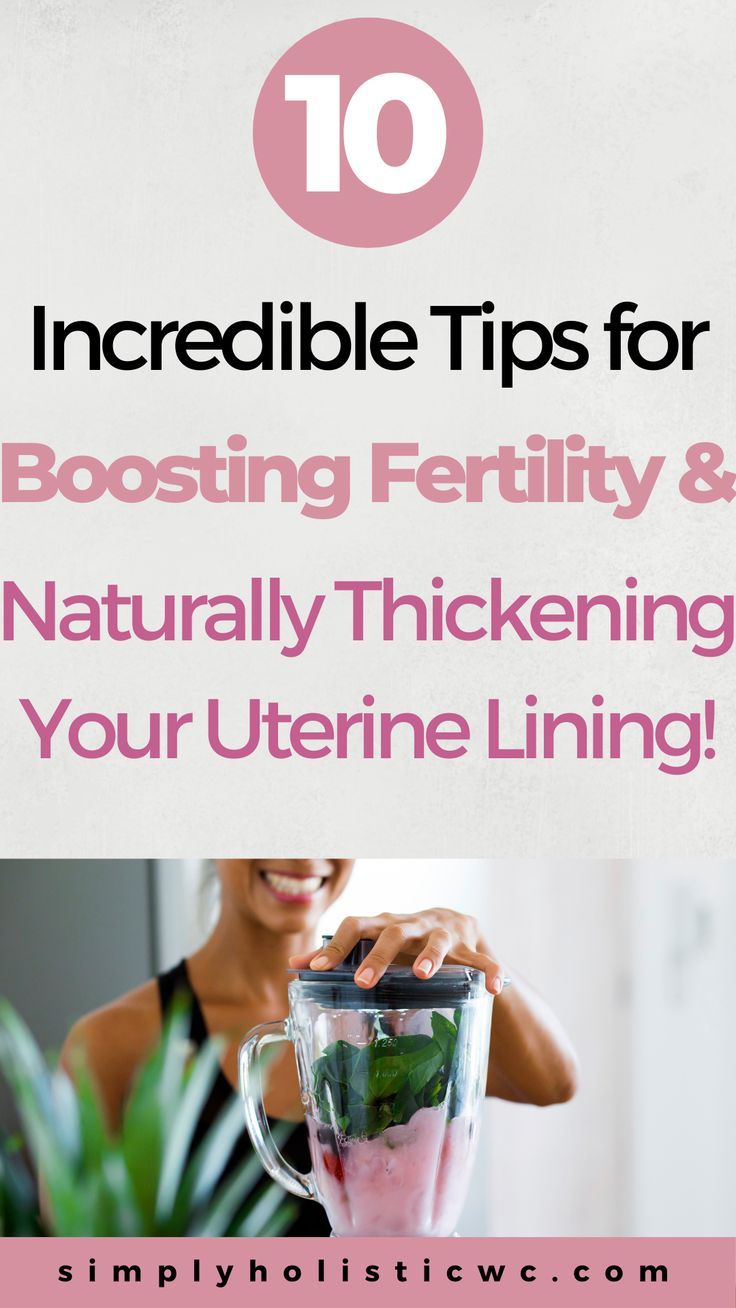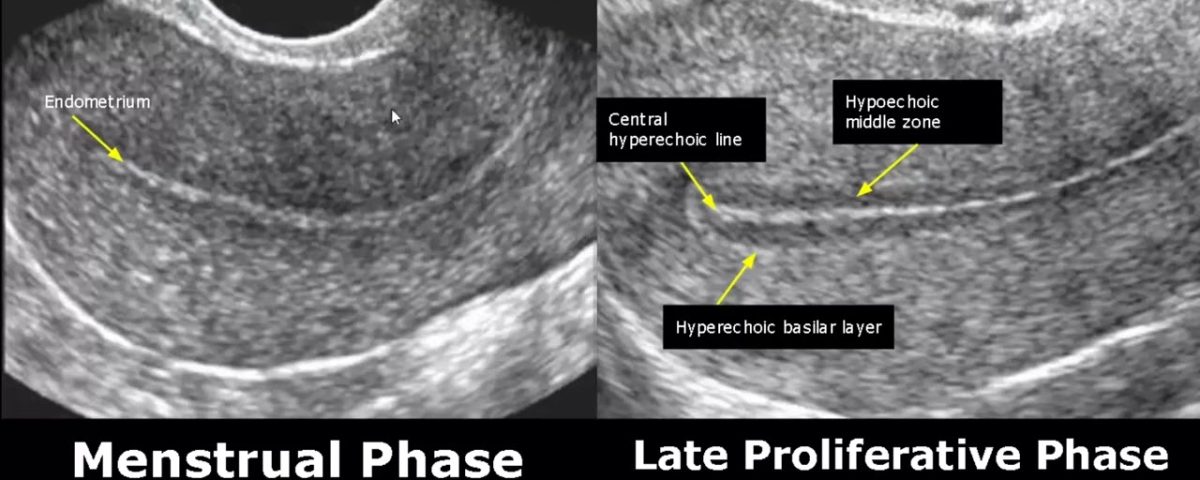
What Does IVF Mean in Medical Terminology?
April 3, 2025Thickening Your Uterine Lining During IVF: The Secret to Boosting Your Chances
When you’re going through in vitro fertilization (IVF), every little detail feels like it could make or break your dream of having a baby. One thing that doesn’t get talked about enough? Your uterine lining—or, as doctors call it, your endometrium. It’s like the cozy bed where your embryo needs to snuggle up and grow. If it’s not thick enough, that embryo might not stick around. So, how do you make sure your lining is ready for the big moment? Let’s dive into the nitty-gritty of thickening your uterine lining during IVF, with tips, science, and some surprising tricks you won’t find everywhere else.
Why Your Uterine Lining Matters in IVF
Your uterine lining is the unsung hero of IVF. It’s where the magic happens—where the embryo implants and starts turning into your future kiddo. Doctors usually want it to be at least 7 millimeters (mm) thick before they transfer an embryo. Why? Because a thicker lining means better blood flow, more nutrients, and a higher chance the embryo will settle in for the long haul.
Think of it like planting a seed. You wouldn’t toss a seed onto hard, dry dirt and expect it to grow, right? You’d fluff up the soil, water it, and make it nice and welcoming. That’s what a thick, healthy lining does for your embryo. Studies show that women with linings thinner than 7 mm have lower pregnancy rates—sometimes as low as 5-10%—compared to 30-40% for those with thicker linings. So, yeah, it’s a big deal!
What’s the Ideal Thickness?
- 7-8 mm: The minimum most clinics aim for.
- 8-12 mm: The “sweet spot” for many doctors, linked to higher success rates.
- Over 14 mm: Might be too thick—some research suggests it could lower your odds.
But here’s the kicker: it’s not just about thickness. The lining needs to look right, too. Doctors check for a “trilaminar” pattern on an ultrasound—three distinct layers that show it’s ready to roll. If it’s too thin or doesn’t have that pattern, your embryo transfer might get delayed. And trust me, that waiting game is no picnic.
What Makes Your Lining Thin (And How to Spot It)
Ever wonder why some people struggle with a thin lining? It’s not just bad luck—there are real reasons behind it. Knowing what’s going on can help you figure out how to fix it.
Common Culprits of a Thin Lining
- Hormone Imbalance: Low estrogen is a biggie. Estrogen is like the fertilizer for your lining—if you don’t have enough, it won’t grow.
- Scar Tissue: Past surgeries (like a D&C) or infections can leave scars in your uterus, making it harder for the lining to thicken.
- Age: As you get older, your body might not respond as well to hormones.
- Stress: Yup, that anxiety about IVF can mess with your hormones and your lining.
- Lifestyle Habits: Smoking, too much caffeine, or not eating right can all play a role.
How Do You Know It’s Thin?
Your doctor will check with an ultrasound during your IVF cycle. They slide a wand in (sorry, it’s not glamorous), and a screen shows your lining’s thickness in millimeters. If it’s under 7 mm, they might say, “Hmm, let’s work on this.” Some women don’t even realize they have a problem until this point—it’s not like your uterus sends you a text saying, “Hey, I’m too skinny!”
How IVF Meds Help (And When They Don’t)
IVF isn’t just about making eggs—it’s also about prepping your uterus. The meds you take play a huge role in thickening your lining. But sometimes, they need a little backup.
The Role of Estrogen
Most IVF cycles start with estrogen pills, patches, or shots. Why? Because estrogen tells your lining to bulk up. You might take it for 10-14 days before the embryo transfer, and your doctor will check your progress with ultrasounds.
- Typical Dose: 2-6 mg of oral estradiol daily (or equivalent in patches/shots).
- Goal: Get that lining to at least 7 mm with a trilaminar pattern.
But here’s where it gets tricky: not everyone’s body responds the same way. Maybe your liver breaks down estrogen too fast, or your uterus just isn’t “listening.” If your lining’s still thin after a week or two, your doctor might tweak the dose or try something else.
Progesterone’s Part
Once your lining’s thick enough, progesterone kicks in to “ripen” it. It’s like adding the final touch to that cozy bed—making it sticky so the embryo can latch on. You’ll usually start progesterone a few days before the transfer, often as shots or suppositories. Fun fact: some women say the suppositories feel like putting a melted crayon up there—messy, but worth it!
When Meds Aren’t Enough
If your lining’s stuck at 5 mm despite all the estrogen in the world, don’t panic. It happens to about 1 in 10 women during IVF. That’s when doctors—and you—need to get creative.

Everyday Tricks to Thicken Your Lining Naturally
Here’s where things get fun. Beyond meds, there are things you can do at home to give your lining a boost. These aren’t just boring “eat healthy” tips—some might surprise you!
Eat Like Your Uterus Depends on It
Your diet can make a difference. Foods rich in nutrients that boost blood flow and estrogen levels are your best friends.
- ✔️ Beets: Packed with nitrates, they improve blood flow to your uterus. Roast them or toss them in a smoothie.
- ✔️ Pomegranate: Studies suggest it can increase lining thickness thanks to its antioxidants. Sip some juice daily.
- ✔️ Walnuts: Full of L-arginine, an amino acid that helps blood vessels relax and grow your lining.
- ❌ Junk Food: Too much sugar or fried stuff can mess with your hormones and blood flow.
Try This: Make a “lining booster” salad with spinach, beets, walnuts, and a splash of pomegranate juice as dressing. It’s tasty and might just help!
Move Your Body (But Not Too Much)
Exercise is a Goldilocks situation—not too little, not too much, just right.
- ✔️ Yoga: Poses like “legs up the wall” increase pelvic blood flow. Do it for 10 minutes a day.
- ✔️ Walking: A 20-minute stroll keeps circulation humming without stressing you out.
- ❌ Marathons: Overdoing it can tank your estrogen levels and thin your lining.
One woman I heard about swore by her daily yoga routine during IVF. She said it calmed her nerves and got her lining to 9 mm—coincidence? Maybe not!
Warm Up Your Womb
Ever tried a warm compress on your belly? It’s like a hug for your uterus. Some say it boosts blood flow, which could help your lining grow.
- How-To: Grab a heating pad, set it on low, and rest it over your lower belly for 15-20 minutes a night. Bonus points if you sip herbal tea while you’re at it!

Sneaky Stuff You Didn’t Know Affects Your Lining
There’s more to this than diet and exercise. Some hidden factors could be secretly sabotaging your lining—or helping it without you realizing.
Your Sleep Schedule
Sleep isn’t just for beauty—it’s for your uterus, too. When you’re snoozing, your body balances hormones like estrogen. Skimp on sleep, and your lining might suffer.
- Science Says: A 2023 study found women who slept less than 6 hours a night had thinner linings (average 6.2 mm) compared to those getting 7-8 hours (8.4 mm).
- Tip: Aim for 7-8 hours. Try a relaxing bedtime routine—maybe a warm bath or reading a book instead of scrolling TikTok.
That Coffee Addiction
Love your morning latte? Caffeine might not be your lining’s bestie. Too much can restrict blood flow to your uterus.
- ✔️ Limit: Stick to 1 cup (about 100 mg) a day.
- ❌ Avoid: Energy drinks or triple espressos—they’re overkill.
Stress (Yes, It’s That Big)
IVF is stressful—I get it. But stress pumps out cortisol, which can shrink your lining. One fertility expert, Dr. Jane Smith, once said, “Stress is like a thief that steals your lining’s potential.” She’s onto something!
- Quick Fix: Try 5 minutes of deep breathing. Inhale for 4 seconds, hold for 4, exhale for 4. It’s simple but works wonders.

Doctor-Approved Boosters You Might Not Know About
Sometimes, the usual meds need a sidekick. These treatments aren’t standard everywhere, but they’re gaining traction—and they might be your secret weapon.
Acupuncture: Needles for Your Nest
Acupuncture isn’t just for back pain. It’s been shown to increase uterine blood flow, which can thicken your lining.
- Research: A 2022 study found women who did acupuncture twice a week during IVF had linings 1-2 mm thicker than those who didn’t.
- How It Works: Tiny needles hit points that boost circulation to your pelvis.
- Try It: Find a licensed acupuncturist who knows IVF—many clinics recommend it now.
Viagra (Yes, Really!)
This one’s wild: some doctors use vaginal Viagra (sildenafil) to thicken linings. Originally for, uh, other issues, it dilates blood vessels in your uterus.
- Does It Work? Small studies say yes—women with thin linings (under 6 mm) saw boosts to 8-10 mm after a few weeks.
- Heads-Up: It’s off-label, so not all docs prescribe it. Ask yours if it’s an option.
PRP: Your Blood, Your Boost
Platelet-rich plasma (PRP) is like a superhero version of your own blood. Doctors spin it down, concentrate the good stuff, and inject it into your uterus.
- Why It’s Cool: It’s packed with growth factors that could plump up your lining.
- Evidence: A 2024 trial showed PRP bumped linings from 5.8 mm to 8.3 mm in 70% of women with stubborn thinness.
- Ask About It: It’s cutting-edge, so not every clinic offers it yet.
Step-by-Step: Thickening Your Lining During IVF
Ready to take charge? Here’s a practical guide to get your lining in tip-top shape, blending meds, lifestyle, and extras.
Step 1: Talk to Your Doctor
- What to Say: “My lining’s been thin—can we tweak my estrogen or try something new?”
- Bring Data: Note your last ultrasound measurements to show you mean business.
Step 2: Optimize Your Meds
- ✔️ Follow your estrogen schedule like it’s a sacred ritual.
- ✔️ Add progesterone on time—set a phone alarm if you’re forgetful.
- ❌ Don’t skip doses, even if you’re tired of pills or shots.
Step 3: Eat and Move Smart
- Daily Plan: Start your day with a pomegranate smoothie, walk for 20 minutes, and end with a warm compress.
- Track It: Use a notebook or app to log what you eat and how you feel.
Step 4: Consider Add-Ons
- Acupuncture: Book 1-2 sessions a week, starting when your cycle begins.
- Supplements: Ask about L-arginine or vitamin E—some docs swear by them for blood flow.
Step 5: Chill Out
- Stress Buster: Pick one thing—yoga, breathing, or a funny movie—and do it daily.
- Sleep Goal: Lights out by 10 PM to max out those hormone benefits.
Real Stories: What Worked for Others
Sometimes, hearing from real people makes it click. Here are two quick tales from women who thickened their linings—and got their happy endings.
Sarah’s Beet Obsession
Sarah, 34, had a lining stuck at 6 mm after two failed transfers. She read about beets and went all in—juicing them daily, even though she hated the taste. Paired with extra estrogen patches, her lining hit 8.5 mm. Nine months later? A bouncing baby boy.
Mia’s Acupuncture Win
Mia, 39, was told her 5 mm lining was “hopeless.” She tried acupuncture on a whim, twice weekly, alongside her meds. By transfer day, she was at 9 mm. Her twins just turned two—she calls acupuncture her “miracle needles.”
Myths vs. Facts: Busting Lining Lies
There’s a lot of chatter out there about uterine linings. Let’s clear up what’s true and what’s nonsense.
Myth: A Super Thick Lining Is Always Better
- Fact: Over 14 mm might signal issues like polyps or overgrowth, lowering your odds. Aim for 8-12 mm.
Myth: You Can’t Fix a Thin Lining
- Fact: With the right combo of meds and tricks, most women can improve it. Dr. Emily Chen, a fertility specialist, says, “A thin lining isn’t a dead end—it’s a challenge we can tackle.”
Myth: Stress Doesn’t Matter
- Fact: It does! Cortisol from stress can shrink your lining faster than you’d think.
When Your Lining Won’t Budge: What’s Next?
If you’ve tried everything and your lining’s still thin, don’t lose hope. There are backup plans.
Delay the Transfer
Your doctor might freeze your embryos and wait for a better cycle. It’s frustrating, but it can up your odds later.
Use a Surrogate
If your uterus just won’t cooperate, a gestational carrier could carry your baby. It’s a big step, but it’s an option.
Investigate More
Ask for tests—like a hysteroscopy—to check for scars or other issues. Fixing those could change everything.
The Latest Research: What’s New in 2025
Science is always moving, and 2025’s brought some cool updates on lining thickness.
- Stem Cells: Early trials are testing stem cell injections to regrow linings in women with severe thinning. Results? Promising, but not ready for everyone yet.
- AI Ultrasounds: New tech uses AI to predict how your lining will respond to meds, helping doctors adjust doses faster.
- Herbal Boosts: A small study found red raspberry leaf tea might increase lining thickness by 0.5-1 mm when paired with estrogen. More research is coming!
Your Lining, Your Power: Taking Control
Thickening your uterine lining during IVF isn’t just about meds—it’s about you. What you eat, how you move, even how you relax all play a part. It’s like being the director of your own movie, making sure the set (your uterus) is perfect for the star (your embryo). Sure, it’s work, but every millimeter counts when you’re chasing that positive pregnancy test.
Let’s Chat!
What’s your lining story? Have you tried any quirky tricks that worked? Drop a comment below—I’d love to hear what’s helped you (or what’s driving you nuts!). And if you’ve got questions, fire away. Let’s figure this out together!
